#Inland Alaska
Explore tagged Tumblr posts
Text
An Unknown Alaska

View On WordPress
#Adventure Travel#Arctic Circle#Dalton Highway#Inland Alaska#NATJA#Oil Pipeline#Trans-Alaska Pipeline
0 notes
Note
Aaa as someone with very little understanding this is probably a vague question, but how does Michigan and its Glorious Scary Lakes fair with climate change? I live in California and it’s just dry and so so so hot and on fire a lot, which is making picturing zora’s domain tricky!
Ty :)
Same as pretty much everywhere, Michigan is seeing effects of climate change, but it's not the same effects you're probably seeing out west! The Great Lakes do insulate us a bit, though.
Even within my own lifetime, we're seeing less cold winters with freezes happening later. Anecdotally, warm temperature spikes mean that snow thaws during the winter and doesn't really accumulate in the same way. Increased temps means we get heavier rains, which can in turn result in flooding--much of lower michigan is very flat so we don't really get mudslides so much but flooding is still very not good. Ice coverage on the Great Lakes has decreased in the winters, which means a longer traversable shipping season but also negative ecological impacts--and also thin ice on the Great Lakes means you can't do things like drive to islands over the naturally-forming ice bridges, which is not crucial but is fun.
We do get tornadoes, which have increased with severity and frequency. Overall, though, we're still not at risk from hurricanes; we're usually too wet for widespread wildfires. The thermal battery of the Great Lakes does insulate us a little from temperature swings and droughts. We get blizzards but we're prepared for blizzards, so while it can be dangerous, it's generally a hunker-down-at-home problem, not a evacuate-at-risk-of-your-life problem.
#we've had one singular wildfire death in the last century#and there's a Lot of forested land so that's saying something#no point in Michigan is more than 7 miles from an inland lake so we're all set for fresh water#we've also got the largest state park/ forest system!#not by acerage i think tho#that's probably alaska
268 notes
·
View notes
Text
A-Mi-Kuk
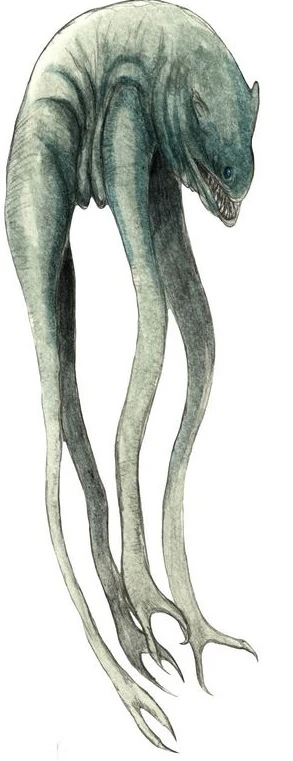
An fabled creature from Inuit mythology is called A-Mi-Kuk. The Bering Strait in Alaska is where this monster is known to exist. The A-Mi-Kuk is described as a massive, heavy, slimy, moist-skinned creature that has four human-like arms and hands in place of legs, which it uses to both walk on and seize its prey. It is also rumored to be able to emerge from underground burrows in inland lakes. It is said to feed primarily on fisherman and those who are stupid enough to take a sea bathe, but it also eats a lot of fish and saltwater birds.
#Bering strait#legendary creature#heavy creature#Inuit mythology#inland lakes#A-Mi-Kuk#Inuit#Alaska#creature#walk#uses#underground#Supposedly#strait#slimy#skin#sea#druidicentropy
3 notes
·
View notes
Text
Several Sentence Sunday
Behold the Coastguard AU! Tommy leaves LA in favour of Sitka, Alaska, where he can hide from the demons of his past (Buck). For more context, please view this post!
Tommy always feels a sense of calm when he’s in the air. It always starts the same, the wash of peace as the radio crackles to life, announcing their next job. The thrum in his veins as he jogs across the tarmac, his crew members in tow as they pile into the chopper. The way his muscles ease as he grips the stick, so familiar with the workings of the machine that it almost feels like an extension of himself. When they take off, it feels as though Tommy can leave all his baggage, everything that weighs him down, on the tarmac, and just be weightless. Tommy lets out a slow breath as the Sikorsky MH-60 Jayhawk eases off the ground and begins its ascent. The small town of Sitka, snow covered and sleepy, grows smaller and smaller as they rise, a refuge against the stark backdrop of the mountains and sounds that surround it. It’s his home, now. His fresh start, away from the sprawling, dense vastness of Los Angeles, where all his ghosts lie, waiting to haunt him. Here, he’s just Tommy, the man he wants them to see. No old demons lurking in his closet, not anymore. Tommy eases the chopper towards the southeast, and they begin their way towards Port Alexander, at the other end of Baranof Island. They’d received a job for a medical evacuation of a 55-year-old male with an open compound fracture of his right humerus. He’d been chopping up firewood and fallen, snapping his arm as he flung it out to catch himself and the log he’d been holding had fallen on top of him. It’s time sensitive, but not critical. “Visibility’s shit today!” Higgs, Tommy’s co-pilot shouts over the radio. It’s mid-January, and there’s a low cloud ceiling, the condensed vapour laying thick and heavy against the base of the mountains. The Jayhawk’s engine whines as Tommy coaxes it upwards, battling through the cloud, but he knows it can make it. A little cloud is no match for these machines, built to perform rescues in all weather types. The only thing the cloud will really affect is Tommy’s ability to navigate his way through the narrow passes of Baranof Island. “I’m hoping it’ll clear up the higher we go,” Tommy calls back. “Shouldn’t take us too long to get there, if I can see the usual route!” As he flies forward, he can hear the rescue swimmers in the back coming up with a game plan. It’s serene to him, pushing through the dense cloud as he listens to chatter of splints and torniquets. He can see murky outlines of mountains and the winding shoreline of Silver Bay as they fly and, clouds easing the more inland they get, and it just feels… right. This is it. This is his place in the world.
Tagged by @hippolotamus for something with the word Sunday in it so I'm gonna run with it
np tagging @theotherbuckley @bigfootsmom @loucifersbitch @buddiekinard @reginamillls
@babygirltommykinard @kinardbuckleys @tommasokinard @tommykinard @tommykinkard
@actuallyitsellie @slightlyobsessedwitheverything @comfortingevanbuckley @midsummersmorn @monsterrae1
@kinkykinard @perfectlysunny02 @bucksbignaturals @bidisasterevankinard @wikiangela
@watchyourbuck @bi-buckrights if you guys are interested!
#911 abc#bucktommy#evan buckley#tommy kinard#911#james writes#coastguard au#tevan#kinley#the ally and the beast
84 notes
·
View notes
Text
BOTD: Great Blue Heron

Photo: Dan Roach
"Widespread and familiar (though often called 'crane'), the largest heron in North America. Often seen standing silently along inland rivers or lakeshores, or flying high overhead, with slow wingbeats, its head hunched back onto its shoulders. Highly adaptable, it thrives around all kinds of waters from subtropical mangrove swamps to desert rivers to the coastline of southern Alaska. With its variable diet it is able to spend the winter farther north than most herons, even in areas where most waters freeze. A form in southern Florida (called 'Great White Heron') is slightly larger and entirely white."
- Audubon Field Guide
#birds#great blue heron#birds of north america#north american birds#herons#wading birds#waders#birds of the us#birds of canada#birds of mexico#birds of central america#birds of the caribbean#birding#bird watching#birdblr#birblr#bird of the day#Ardea herodias
92 notes
·
View notes
Text
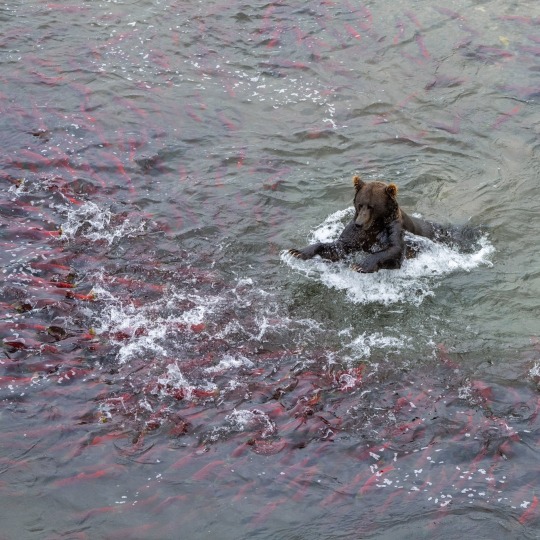
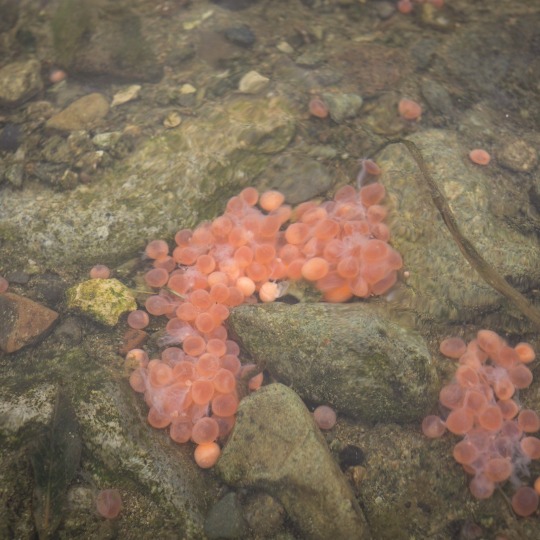

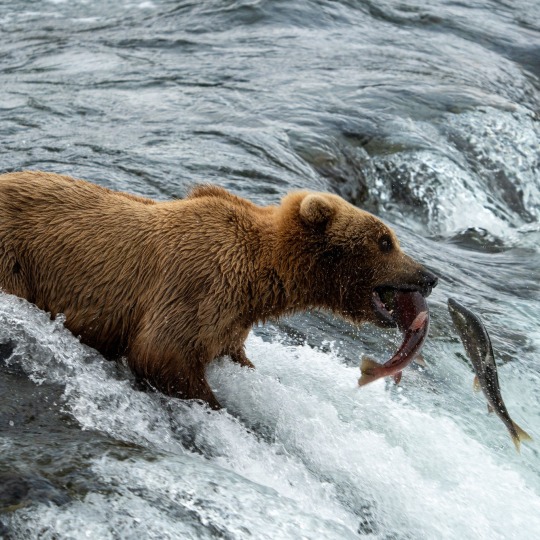
Salmon Run in Alaska
At Katmai National Park & Preserve in Alaska, salmon are the lifeblood of a fertile coastal ecosystem. At Brooks Falls, the salmon must run a gauntlet of hungry bears, wolves, birds and other fish-eaters before spawning further inland. Every summer, sockeye salmon return from the ocean, where they have spent two or three years, and travel up rivers, lakes and streams to return to the headwater gravel beds of their birth to deposit their young before dying. A sockeye salmon fresh from the sea in July contains around 4,500 calories, while a spawned-out salmon in September may only have half that many. Bears feast on them and turn into the chonky celebrities of #FatBearWeek! The last few documented salmon runs have shown high numbers — in 2019, they reached a record-breaking 62.3 million, and in 2021, they broke that record again with almost 65 million sockeye. The 2022 salmon run was strong and healthy, with approximately 50 million sockeye. Right now, there are enough salmon to go around, but scientists continue to monitor and collect data to understand what kind of impacts heat and weather patterns will have on future runs. Learn more about sockeye salmon in Katmai. Photographs by F. Jimenez, Russ Taylor, Anela Ramos and Lian Law / NPS
via: U.S. Department of the Interior
#fish#salmon#salmonid#fisheries#ocean#rivers#alaska#bear#bears#brown bear#mammal#animals#nature#north america#ecology#science
111 notes
·
View notes
Text

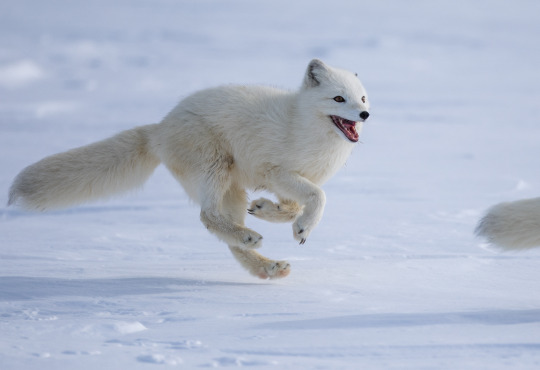


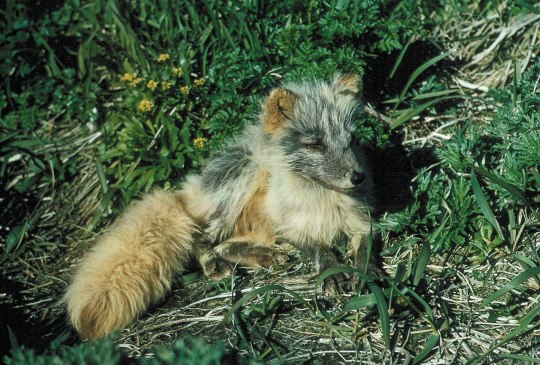
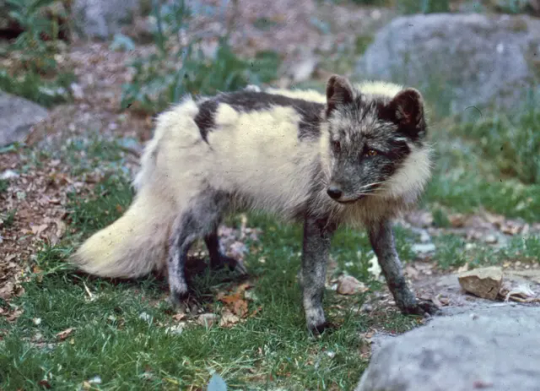
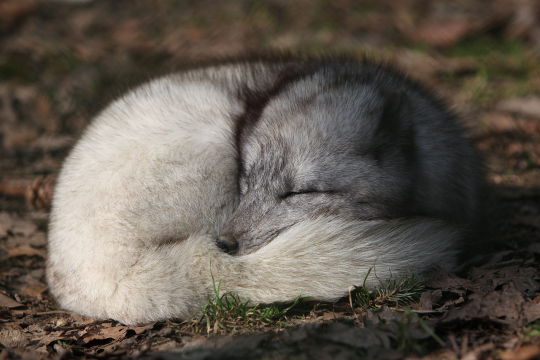
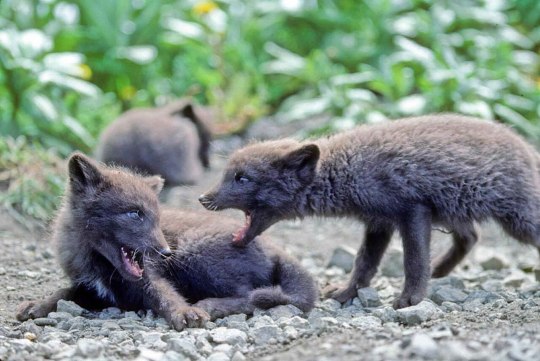
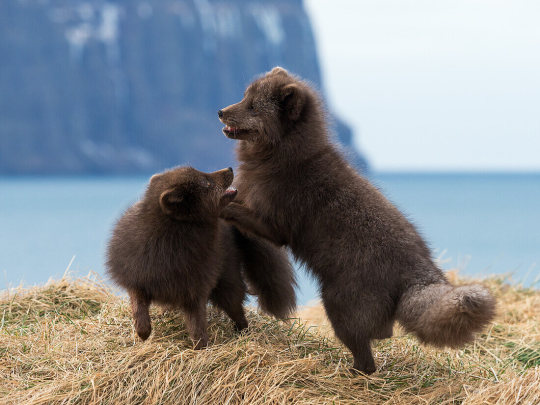


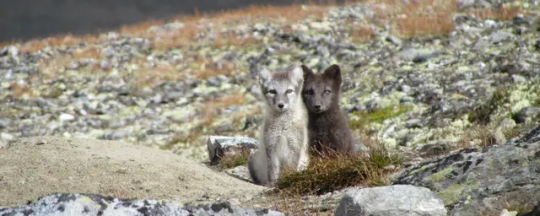
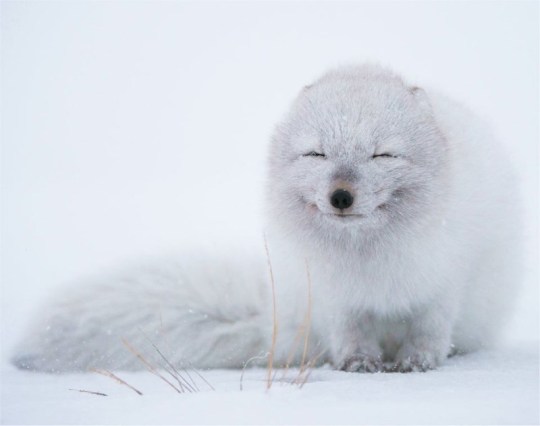
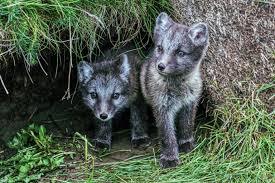
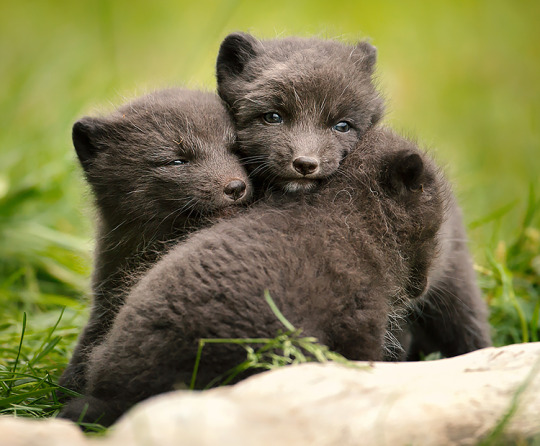
Vulpes lagopus also known as the arctic fox, white fox, polar fox, or snow fox is a small species of fox native to the polar regions of the Northern Hemisphere where it dwells throughout Greenland, Findland, Norway, Sweden, Canada, Alaska, and many Arctic islands. Being the only land mammal native to Iceland. Arctic foxes mostly inhabit tundra, taiga, and pack ice but can also be found in the boreal forests of Canada and Alaska. The color of the fox's coat also determines where they are most likely to be found. The white morph mainly lives inland and blends in with the snowy tundra, while the blue morph occupies the coasts because its dark color blends in with the cliffs and rocks. The arctic fox is a generalist omnivore which typically eats any small animal they can find, including lemmings, voles, other rodents, hares, birds, seal pups, fish, insects, and shellfish in addition to berries, flowers, seaweed, carrion, and bird eggs. Arctic foxes are themselves eaten by eagles, wolves, wolverines, red foxes, and bears. Arctic foxes survive winters and food scarcity by both hoarding food in buried caches and storing large amounts of body fat. Reaching around 18 to 27inches (46 to 68cms) in body length with typically 12inch (30cm) long tail, and 3.1 to 20.7lbs ( 1.4 to 9.4kgs) in weight, the arctic fox is a small canine with a generally compact body shape, long fluffy tail, short muzzle and legs, and short, thick ears. It sports numerous adaptations to the extreme cold such as fur covered foot pads and dense multilayered pelage, which provides excellent insulation. To prevent heat loss, the Arctic fox curls up tightly tucking its legs and head under its body and behind its furry tail. There are two genetically distinct coat color morphs: the white morph has seasonal camouflage, white in winter and brown along the back with light grey around the abdomen in summer. The blue morph is often a dark blue, brown, or grey color year-round. Both morphs sport distinct summer and winter coats. Arctic foxes form monogamous pairs during the breeding season (from April to May) and they stay together to raise their young in complex underground dens. Occasionally, other family members may assist in raising their young, forming larger socially dynamic packs. These larger packs are particularly common in areas where the arctic fox overlaps with the red fox. After a 52 day pregnancy a mother arctic fox may give birth to up to 25 young. The young emerge from the den when 3 to 4 weeks old and are weaned by 9 weeks of age. Under ideal conditions an arctic fox may live up to 14 years.
#pleistocene pride#pliestocene pride#cenozoic#fox#arctic#wildlife#animal facts#animal#canine#arctic fox
16 notes
·
View notes
Text
Round 1 match 7A
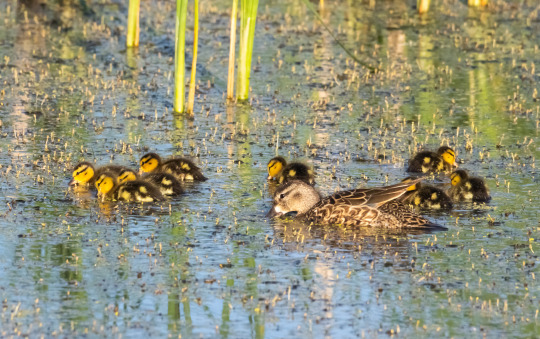
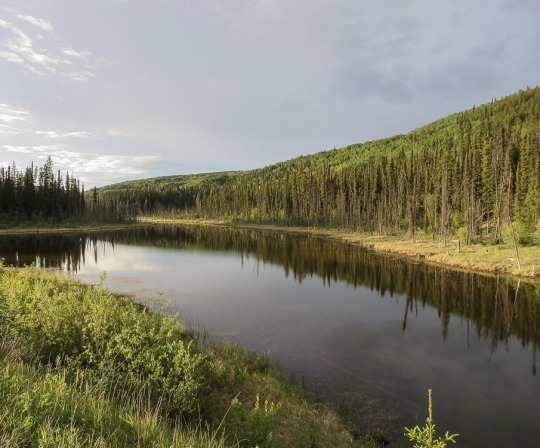
Blue-winged Teals have a large nesting range, including much of the inland regions of Canada and the United States. Like American Wigeons, Blue-winged Teals nest in grasslands and use grass to line their nests. Ducklings have dark brown backs and paler yellow-brown faces and bellies. They have a dark brown eyestripe.
White-winged Scoters are sea ducks that nest near freshwater lakes and ponds in inland regions of Canada and Alaska. Females usually return to nest in the same area where they hatched. This practice is known as natal philopatry and can be observed in other types of animals such as Pacific salmon. They build their nests on the ground amongst dense, thorny vegetation that provides a defence against predators. Pictures and information on the appearance of White-winged Scoter ducklings are incredibly difficult to locate, however it is likely that they look like other scoter ducklings, which are dark all over, except for a white cheek patch.
#blue-winged teal#white-winged scoter#ducks#birds#baby duck poll#ducklings goslings cygnets#tumblr polls#tournament poll#round 1
6 notes
·
View notes
Text
Okay, mis petite amores, today’s fish is a little less flashy, but still - they glow. In this post you will learn about fish candles, overland grease trails, and a theory on the state of Oregon.
I would like to introduce you to Thaleichthyes pacificus, also known as the eulachon (you-luh-con, in the lower 48; hooligan in Alaska; oolighan in Chinook Jargon)Also known as the candlefish.
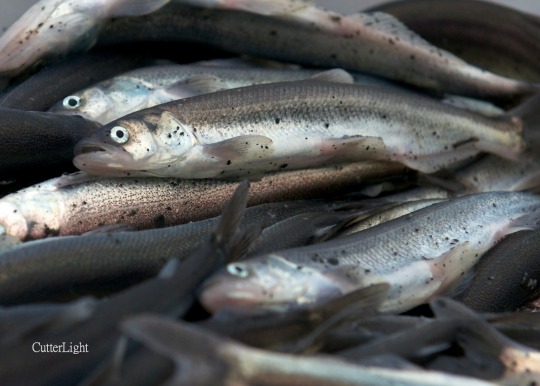
These are tiny smelt - but they are also extremely fatty fish.
With up to 15% of their body weigh being fat tissue, if you dry one out and string it on a wick, YOU CAN LITERALLY BURN IT LIKE A CANDLE.
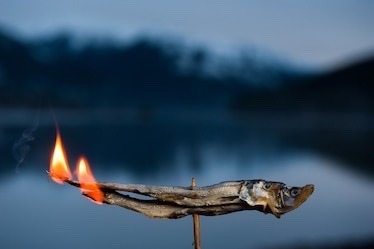
They’re anadromous, like salmon, so they live in the ocean during most of their lives but spawn in freshwater rivers - though they’re rather less predictable.
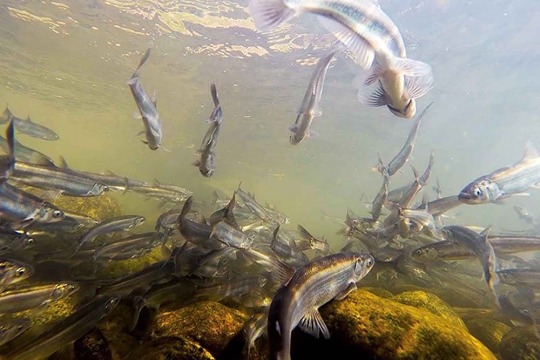
Indigenous communities on North America’s Pacific coast included eulachon as part of their diet, and often processed them for oil - which is done by letting them rot in a hole in the ground for about a week before adding boiling water and skimming the oil off the top.
Eulachon oil was so widely traded between coastal tribes and inland tribes that the trade routes were called grease trails.
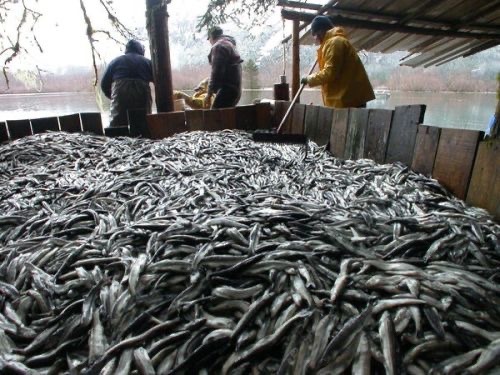
In fact, one archaeologist argued in a paper that the name of the state of Oregon was derived from the Chinook Jargon word - oolighan.
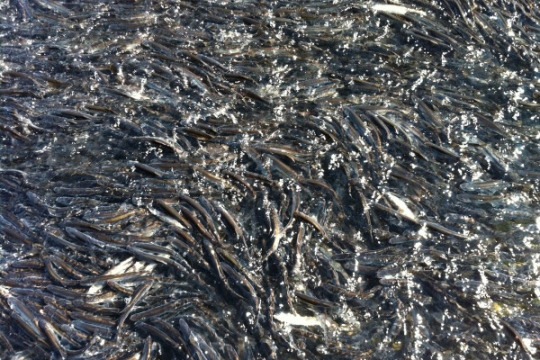
A few distinct population segments of eulachon are threatened or endangered, so at this point I would not in good conscience recommend setting any on fire.
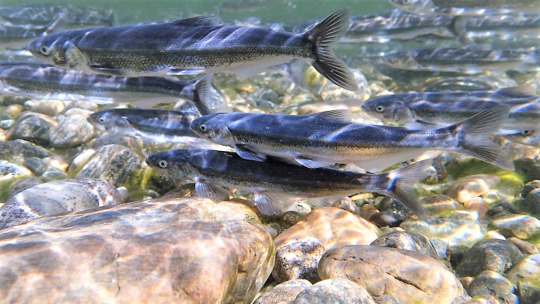
87 notes
·
View notes
Text


Billionaire fossil fuel mogul David Koch died August 23, 2019. Though he will rightfully be remembered for his role in the destruction of the earth, David Koch’s influence went far beyond climate denial. Ronald Reagan may have uttered the famous words, “Government is not the solution to our problem, government is the problem” back in 1981—but it was David Koch, along with his elder brother Charles and a cabal of other ultrarich individuals, who truly reframed the popular view of government. Once a democratic tool used to shape the country’s future, government became seen as something intrusive and inefficient—indeed, something to be feared.
“While Charles was the mastermind of the social reengineering of the America he envisioned,” said Lisa Graves, co-director of the corporate watchdog group Documented, “David was an enthusiastic lieutenant.���
David Koch was particularly instrumental in legitimizing anti-government ideology—one the GOP now holds as gospel. In 1980, the younger Koch ran as the vice-presidential nominee for the nascent Libertarian Party. And a newly unearthed document shows Koch personally donated more than $2 million to the party—an astounding amount for the time—to promote the Ed Clark–David Koch ticket.
“Few people realize that the anti-American government antecedent to the Tea Party was fomented in the late ’70s with money from Charles and David Koch,” Graves continued. “The Libertarian Party, fueled in part with David’s wealth, pushed hard on the idea that government was the problem and the free market was the solution to everything.”
In fact, according to Graves, “The Koch-funded Libertarian Party helped spur on Ronald Reagan’s anti-government, free-market-solves-all agenda as president.”
Even by contemporary standards, the 1980 Libertarian Party platform was extreme. It called for the abolition of a wide swath of federal agencies, including the Food and Drug Administration, the Department of Energy, the Environmental Protection Agency, the Nuclear Regulatory Commission, the Federal Aviation Administration, the Bureau of Land Management, the Federal Election Commission, the Bureau of Alcohol, Tobacco, and Firearms, the Federal Trade Commission, and “all government agencies concerned with transportation.” It railed against campaign finance and consumer protection laws, the Occupational Safety and Health Act, any regulations of the firearm industry (including tear gas), and government intervention in labor negotiations. And the platform demanded the repeal of all taxation, and sought amnesty for those convicted of tax “resistance.”


Koch and his libertarian allies moreover advocated for the repeal of Social Security, Medicare, Medicaid, and other social programs. They wanted to abolish federally mandated speed limits. They opposed occupational licensure, antitrust laws, labor laws protecting women and children, and “all controls on wages, prices, rents, profits, production, and interest rates.” And in true libertarian fashion, the platform urged the privatization of all schools (with an end to compulsory education laws), the railroad system, public roads and the national highway system, inland waterways, water distribution systems, public lands, and dam sites.
The Libertarian Party never made much of a splash in the election—though it did garner almost 12 percent of the vote in Alaska—but doing so was never the point. Rather, the Kochs were engaged in a long-term effort to normalize the aforementioned ideas and mainstream them into American politics.
(continue reading)
#politics#republicans#libertarians#koch brothers#koch bros#libertarianism#conservatism#ronald reagan#reaganism#charles koch#david koch#libertarian party
58 notes
·
View notes
Text
CANADIAN ENGLISH
North American English is the most generalized variety of the English language as spoken in the United States and Canada. Because of their related histories and cultures, plus the similarities between the pronunciations (accents), vocabulary, and grammar of American English and Canadian English, the two spoken varieties are often grouped together under a single category.
Many times British, American and Canadian people cannot distinguish when someone is speaking if they are American or Canadian.
This is because Canada borders both the United States and Alaska.
Canadian Spelling
As in most matters, Canadian spelling is somewhere on that ill-defined continuum between British and American practices. Also as in most matters, Canadian spelling is a little more flexible than either British or American spelling. While, in general, it is closer to the British, the American variant is sometimes preferred, and often either would be considered acceptable (although the British is still usually considered “more correct”).
It can even be argued that there is a regional bias within Canada: in general terms, Ontario, British Columbia and Newfoundland are usually closer to the British usage, and Alberta and the Prairie provinces closer to the American.
Throughout part of the 20th century, some Canadian newspapers adopted American spellings,for example, color as opposed to the British-based colour. Some of the most substantial historical spelling data can be found in Dollinger (2010)and Grue (2013) The use of such spellings was the long-standing practice of the Canadian Press perhaps since that news agency's inception, but visibly the norm prior to World War II.The practice of dropping the letter u in such words was also considered a labour-saving technique during the early days of printing in which movable type was set manually.Canadian newspapers also received much of their international content from American press agencies, so it was much easier for editorial staff to leave the spellings from the wire services as provided.
In the 1990s, Canadian newspapers began to adopt the British spelling variants such as -our endings, notably with The Globe and Mail changing its spelling policy in October 1990. Other Canadian newspapers adopted similar changes later that decade, such as the Southam newspaper chain's conversion in September 1998. The Toronto Star adopted this new spelling policy in September 1997 after that publication's ombudsman discounted the issue earlier in 1997. The Star had always avoided using recognized Canadian spelling, citing the Gage Canadian Dictionary in their defence. Controversy around this issue was frequent. When the Gage Dictionary finally adopted standard Canadian spelling, the Star followed suit. Some publishers, e.g. Maclean's, continue to prefer American spellings.
CANADIAN RAISING
Canadian raising (also sometimes known as English diphthong raising) is an allophonic rule of phonology in many varieties of North American English that changes the pronunciation of diphthongs with open-vowel starting points. Most commonly, the shift affects /aɪ/ ⓘ or /aʊ/ ⓘ, or both, when they are pronounced before voiceless consonants (therefore, in words like price and clout, respectively, but not in prize and cloud). In North American English, /aɪ/ and /aʊ/ usually begin in an open vowel [ä~a], but through raising they shift to [ɐ] ⓘ, [ʌ] ⓘ or [ə] ⓘ. Canadian English often has raising in words with both /aɪ/ (height, life, psych, type, etc.) and /aʊ/ (clout, house, south, scout, etc.), while a number of American English varieties (such as Inland North, Western New England, and increasingly more General American accents) have this feature in /aɪ/ but not /aʊ/. It is thought to have originated in Canada in the late 19th century.
As its name implies, Canadian raising is found throughout most of Canada, though the exact phonetic quality of Canadian raising may differ throughout the country. In raised /aʊ/, the first element tends to be farther back in Quebec and the Canadian Prairies and Maritimes (particularly in Alberta): thus, [ʌʊ]. The first element tends to be the farthest forward in eastern and southern Ontario: thus, [ɛʊ~ɜʊ]. Newfoundland English is the Canadian dialect that participates least in any conditioned Canadian raising, while Vancouver English may lack the raising of /aɪ/ in particular.
Canadian raising is not restricted to Canada. Raising of both /aɪ/ and /aʊ/ is common in eastern New England, for example in some Boston accents (the former more likely than the latter),as well as in the Upper Midwest. South Atlantic English, New Orleans English, and the accents of England's Fens feature it as well.
Raising of just /aɪ/ is found in a much greater number of dialects in the United States; some researchers have begun to refer to raising of /aɪ/ without raising of /aʊ/ as American Raising. This phenomenon is most consistently found in the Inland North, the Upper Midwest, New England, New York City, and the mid-Atlantic areas of Pennsylvania (including Philadelphia), Maryland, and Delaware, as well as in Virginia. It is somewhat less common in the lower Midwest, the West, and the South. However, there is considerable variation in the raising of /aɪ/, and it can be found inconsistently throughout the United States.
EH
Eh (informal, chiefly Canada, Upper Midwestern US, New Zealand, UK) Used as a tag question, to emphasize what goes before or to request that the listener express an opinion about what has been said.
In North America, the word is stereotypically associated with Canada and can sometimes convey that the speaker is trying to sound (sarcastically) Canadian outside the country. However, it is in widespread use in many other parts of the English-speaking world, including the northern United States, Australia, New Zealand, England, Malaysia, the Philippines, Scotland, Singapore, South Africa and Nigeria.
Silvio Pasqualini Bolzano inglese ripetizioni English
#dialects#lexicography#lexicology#linguistics#english#american english#languages#united states#canada#united kingdom#canadian#usa#spelling#accents#pronunciation#phonology#phonetics#great britain#vocabulary#region#variety#slang#informal#colloquialism#movies#films#voice acting#england
8 notes
·
View notes
Text
Miracle Boxes - The Mage Generation
These are the first iteration of the Miracle Boxes, created by the Mage himself thousands of years ago. These consisted of twelve Miracle Boxes, each with ten kwamis, which the Mage entrusted to people during his travels around the world. Thanks to the use of the Panda Miraculous, the Mage lived much longer than most humans, making his travels across the world last several hundred years.
The Mage Box - Wandering Panda Crow Unicorn Rabbit Beaver Dove Horse Owl Parrot Scorpion
The Mage Box was the Miracle Box that the Mage personally looked after. He kept the Miraculouses of great power with him, along with ones that helped him in his travels around the world. The Mage would stay in different lands for decades at a time, and choose a close companion from these areas to become a Guardian of one of the boxes he carried. These Guardians were assigned to care for these kwamis, and to watch over a vast region.
The Successor Box - South Asia and West Asia Ladybug Black Cat Qilin Frog Bee Butterfly Fox Peacock Swan Turtle
This Miracle Box was the first the Mage trusted in the hands of another, which was his apprentice. He and apprentice left their home land (in what is now modern Tibet). They both headed south, with the apprentice heading west when they parted ways, while the Mage went east as he began his travels around the world.
The Island Box - Oceania and Southeast Asia Wolf Platypus Pterosaur Tuatara Binturong Blackbuck Coral Kangaroo Komodo Dragon Thylacine
This Miracle Box's Guardian was originally from what is now modern India, who was a traveling companion with the Mage as they went east together. When they parted ways the Mage went north, while she promised to take the Miracle Box south. This Guardian spent much of her time in Southeast Asia, and eventually headed down towards Australia and into the Pacific Islands.
The Coastal Box - East Asia and North Asia Dragon Cobra Dog Goat Monkey Mouse Ox Pig Rooster Tiger
The Mage entrusted this Box to a family who lived along the coast. The range this Guardian and Miracle Box looked after was along the coast of eastern Asia, but did stretch inland as well. The Mage spent a long time with this Guardian and their family, before deciding to pursue stories about a land that laid across the ocean.
The Northern Box - North America Thunderbird Bear Cougar Deer Goose Otter Rattlesnake Raven Salmon Woodpecker
The Mage didn't know what he'd find across the ocean, but he stumbled into a land much bigger than he imagined. His journeys started up in what is now Alaska, down through what would become Canada and the United State. Like many Miracle Boxes before the new Guardian had a vast region with many different cultures for them and their kwamis to look after.
The Central Box - Central America Firefly Raccoon Feathered Serpent Spider Axolotl Bison Coyote Eagle Falcon Shark
Of all of the Mage's travels, it was in Central America where he stayed the longest. This was because ended up adopting a daughter, who he went on many adventures with. The Mage entrusted the last Miracle Box with an Alpha Duo to her, who he stayed with to watch over, along with his grandchildren in time. He continued south shortly after his great-grandson became Guardian, knowing that he couldn't stay there forever.
The Southern Box - South America Grim Snail Anglerfish Crocodile Dolphin Jaguar Jellyfish Llama Locust Moth
The Mage struggled to bond with others as he headed into South America, pained with his extended life and the lost of love ones that comes from it. In time he befriended a lone traveler who lived a similar lifestyle than him, who he entrusted to become a Guardian. They parted ways when the Mage headed south across the ocean, where he encountered the frozen wasteland of Antarctica.
The Jungle Box - Southern Africa Dinosaur Penguin Elephant Gorilla Jackal Okapi Ray Rhinoceros Squirrel Zebra
The Mage did not remain within Antarctica for long, with the inhospitable environment and lack of human life. He headed north up into Madagascar, where he spent a considerable amount of time before he traveled to the mainland of Africa, which turned out to be much bigger than he had excepted when first traveling to the continent.
The Desert Box - Northern Africa Griffin Dragonfly Camel Chameleon Cheetah Giraffe Hippopotamus Hyena Ostrich Secretarybird
He did not select a guardian for this box for a long time, not until his arrival in ancient Egypt. This was the first place the Mage had truly settled in for many years, but he did eventually head east across the Sahara. The Mage's travels in Africa ended in what is now in Morocco, where he then headed up into the Iberian Peninsula.
The Peninsula Box - Europe Kelpie Aurochs Ant Crab Gecko Hedgehog Ibex Lion Mouflon Seahorse
Europe was yet another region that took the Mage a long time to select a Guardian for, and often retraced his paths in locations he had been in before during this search. In the end he trained up several potential Guardians, but only entrusted the box to one, leading to conflict for the box after he left.
The Arctic Box - Northern Europe and Northern Asia Phoenix Lynx Moose Narwhal Octopus Polar Bear Seal Sheep Weasel Wolverine
The Mage settled a lot more often as he journeyed northward, still very nomadic in where he would travel, but would often stay in settlements for long periods of time, especially during harsh winter months. The Mage loved the world and his travels, but he was tired, especially after living for so long. He entrusted this Miracle Box to a woman the kwamis loved to become their Guardian.
The Mountain Box - Central Asia and the Tibetan Plateau Yeti Red Panda Bat Elk Pangolin Quail Scarab Snow Leopard Tortoise Vulture
At the end of his centuries long journey, the Mage found himself rapidly approaching his homeland. When heading across the mountains he found a Guardian for the last Miracle Box with him. He did not spend long here as he did in other regions of the world, being so close to home. And after such a long journey the Mage for ready to rest.
---
The Mage's apprentice was long dead by the time he returned to his homeland, but he was able to meet those who were protecting the Successor Box in his apprentice's place. Satisfied with the system he had in place and the kwamis that lived across the world, the Mage decided that he was ready to rest after living for so many years.
Still he knew the greed of humanity, and decided that the two Soul Gems along with the Miraculouses of the Panda, Crow, and Unicorn should be hidden away. They were to be hidden away in the Mage Box, so the other seven kwamis he had once looked after he decided to spread across the world, to unite with other Miracle Boxes out there.
After this he hid away the powerful Miraculouses and the Soul Gems, before officially retiring to his homeland under the care of the Guardians of the Successor Box. While he never told a soul where his Miracle Box was hidden, he did entrust the current Guardians with the knowledge of the location of one Soul Gem, before he passed away of old age.
---
The True Generation of Miracle Boxes
The Order Generation of Miracle Boxes
#kwamis#kwami oc#kwami#oc kwami#ml headcanons#my headcanons#miraculous headcanon#miraculous ladybug headcanon#ml the mage#the mage#vitaa#plagg#tikki#shii#miracle box
37 notes
·
View notes
Text
How to Identify Buffleheads
Click here to learn more about the How to Identify article series. Originally posted on my website at https://rebeccalexa.com/how-to-identify-buffleheads/
Name: Bufflehead (Bucephala albeola)
Range and typical habitat(s): Breeding range primarily in boreal and taiga habitats in western Canada and south-central Alaska with smaller breeding populations in surrounding areas; winters along both the Pacific coastline all the way from Alaska and Canada to northern Mexico, and inland in the southern half of the United States plus parts of the Pacific Northwest and Great Lakes regions, and northern Mexico. Migratory routes may additionally take them through other areas of United States and Canada not mentioned above.
You’re most likely to find them around water, whether quiet coastal areas or inland freshwater lakes, bays, and other waterways. Like other waterfowl they prefer places with plenty of vegetation around the water’s edge for shelter. Lakes are their preference during breeding season.

Two adult male buffleheads
Distinguishing physical characteristics (size, colors, overall shapes, detail shapes) and behaviors: The short version is: the bufflehead is a small duck with a big head. To be more detailed about it, they are generally about 12-16 inches in length, smaller than most other duck species in the same range, with a wingspan a little less than two feet across. The dark-colored bill is comparatively small, making up less than half the total length of the head, and the pointed tail is similarly compact. The upper bill has a concave curve down from the forehead to the tip. In flight the wings have distinctly pointed ends and the tail is spread into a wedge shape, with a quick, constant wingbeat.
It is the coloration that sets these birds apart, though. Males in breeding plumage are quite stunning, with an iridescent green-purple head that has a large white patch just behind the dark eye. The back is black, and the sides and belly are bright white, with a dark gray tail. The wing, when open, is dark with a prominent white band across the upper wing. The feet are bright pinkish-orange.
Females have a very dark gray to black head with a much smaller white patch behind the eye, a dark back and wing with gray sides, tail, and belly. Rather than a full white band, her gray to black wings have one smaller white patch apiece on the upper side, and dark underneath. Female buffleheads’ feet are dark gray to black. Immature males are similarly colored. Young ducklings, when still in down, are black with white patches on their cheeks.
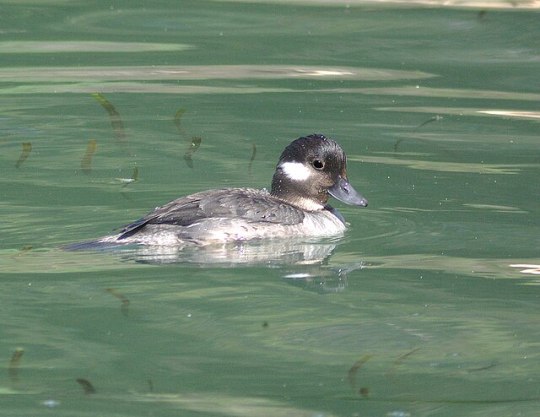
Adult female bufflehead
Buffleheads are diving ducks, and make many short dives in search of aquatic invertebrates, fish eggs, and plants. In fact, they’re very rarely ever seen on dry land, and spend most of their time on the water eating, resting, or preening. They tend to live in small groups during non-breeding months rather than the large flocks of some other waterfowl. They may linger in their breeding grounds later than many other ducks before heading south or to the coast for winter.
During breeding season buffleheads are generally monogamous with their partners from previous years, and they are cavity nesters, dependent on holes in dead trees made by woodpeckers. These small ducks especially prize holes made by northern flickers (Colaptes auratus) as they are too small for larger ducks to fit into but are perfectly bufflehead-sized. They may also make use of similarly-sized nest boxes. Larger ducks may aggressively force buffleheads out of prime nesting sites, and goldeneyes (Bucephala spp.) may even injure or kill the smaller buffleheads in fights over nests.
Courtship displays include the male soaring over the female, then coming to a spectacular sliding landing on the water’s surface, followed by some energetic head bobs. Once mates have established a territory, they defend it aggressively from other buffleheads.
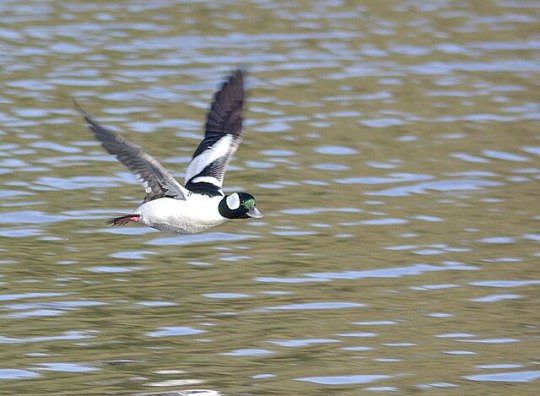
The female bufflehead will lay anywhere from four to seventeen eggs with plain, cream-colored shells. These hatch after thirty days of incubation, and once the youngest duckling has spent a day in the nest the female and all the ducklings jump out of the box and head straight for the water. Meanwhile, females that were unsuccessful in breeding spend time looking for potential nesting sites for next year.
Other organisms it could be confused with and how to tell the difference: Buffleheads are most commonly mistaken for their larger Bucephala cousins, the common goldeneye (Bucephala clangula) and Barrow’s goldeneye (Bucephala islandica). Both species of goldeneyes, as their name suggests, have yellow eyes instead of the dark eyes of the buffleheads, and are larger overall. Male common goldeneyes lack the white head patch and instead have a smaller white patch in front of the eye, while females lack any white facial markings at all. When folded, the male common goldeneye’s wing has small white patches divided by thin black lines. The female common goldeneye has an orange tip on her beak, and her head is a lighter, ruddier brown than that of the female bufflehead. Both common goldeneye sexes have orange legs.

A pair of common goldeneyes, female (L) and male (R)
The Barrow’s goldeneye is similar to the common, but the male Barrow’s white face patch is larger and more oval in shape compared to the common’s round patch. The white wing patches on the Barrow’s male are smaller, and there is a small black hook shape at the shoulder. Female Barrow’s have an entirely orange beak except for a tiny bit of black at the tip.

A pair of Barrow’s goldeneyes, female (L) and male (R).
The hooded merganser also looks somewhat similar to the bufflehead, but is much larger, reaching over nineteen inches in length. The male hooded merganser in breeding colors does have a black head, but the white patch on the large crest behind the eye is much larger than in the bufflehead, and the black lacks the purple-green iridescence. His sides are reddish-brown and he has prominent white stripes on his black wings. The female hooded merganser lacks white markings on her face and has a yellow beak. Her head is a lighter grayish brown with a larger crest, and her body is also a lighter gray than that of the female bufflehead. Both merganser sexes have yellow rather than dark eyes.
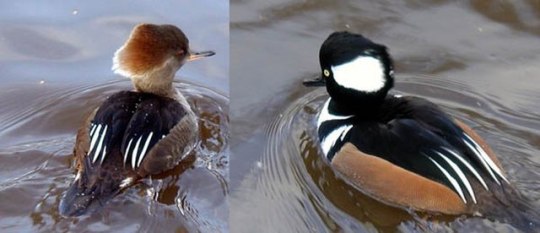
A pair of hooded mergansers, female (L) and male (R)
Another species that is markedly larger than the bufflehead is the harlequin duck. The male does have a black head, but he has a large white patch in front of his eye and two small ones behind it, with a white stripe on top of his head. His body is gray and he has prominent rust patches on top of his head and on his sides, and a white stripe on his back. The female harlequin duck is a plain brownish-gray with a large white patch in front of the eye and a much smaller one behind, and her underside is light gray with darker gray spots.
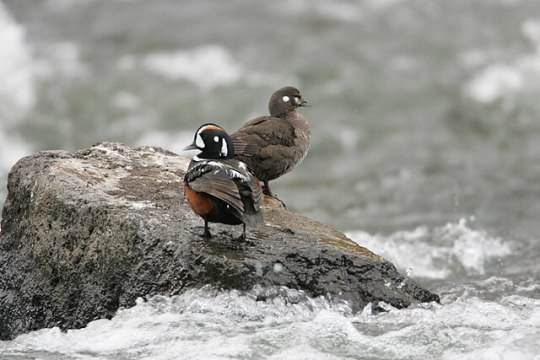
A pair of harlequin ducks, male (L) and female (R)
Further Reading:
All About Birds: Bufflehead
Audubon Field Guide: Bufflehead
Ducks Unlimited: Bufflehead
eBird: Bufflehead
Aquarium of the Pacific: Bufflehead
Did you enjoy this post? Consider taking one of my online foraging and natural history classes or hiring me for a guided nature tour, checking out my other articles, or picking up a paperback or ebook I’ve written! You can even buy me a coffee here!
#buffleheads#ducks#waterfowl#birds#birdwatching#birding#wildlife#animals#nature identification#nature#dinosaurs#biology#ornithology#science#scicomm#bird#ecology#wild animals#zoology
23 notes
·
View notes
Text
one of my favorite things is when you see someone talk about "america" having unusually cheap stuff and then you go to compare the prices and it turns out it's yet another idiot who forgets that we don't have a national sales tax/vat rate for most goods and the phenomenon of supposedly unusually low prices vs canada or the EU or whatever instantly vanishes when you pull the sales tax/gst/vat out of the listed prices for the same goods in other countries.
although sometimes its just things that are legit cheap because they're made here eg certain fuels and a wide variety of foods, with the foods actually having substantial price increases from where they "should" be since the primary domestic means of support for farming is by guaranteeing price floors and other means of keeping the food pricing up, because the market rates would otherwise be much lower. like for example, basically all kinds of grains and sugar-bearing crops.
though it's also very funny to see claims that prices are universally low across the country when like, shit very much gets a whole lot pricier in distant areas eg alaska beyond the big ports, all of hawaii, tons of general inland west areas with very low population and relatively difficult transportation. like there is frankly about the same variation in prices nominal and especially prices vs local purchasing power across the US as there is across other very large integrated economic areas like the EU and the PRC and Russia and Canada!
2 notes
·
View notes
Text
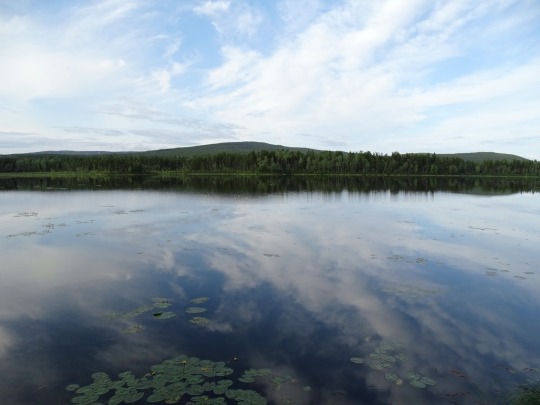
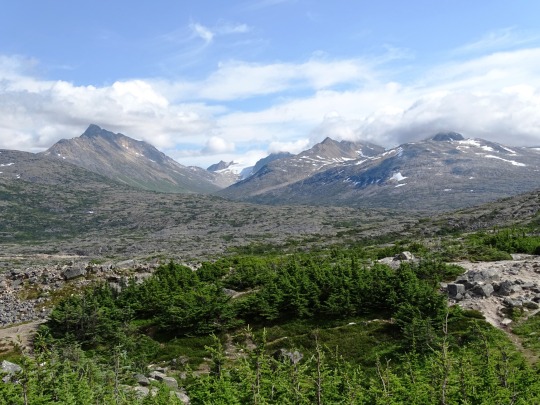
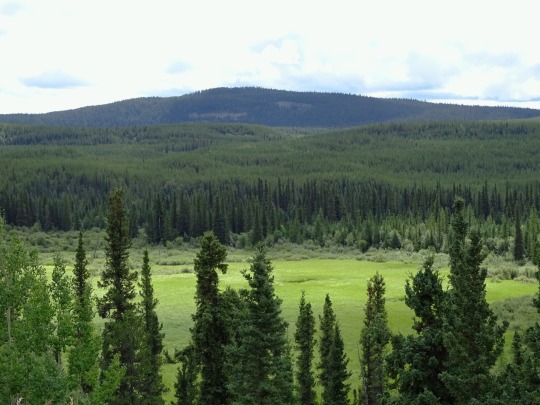
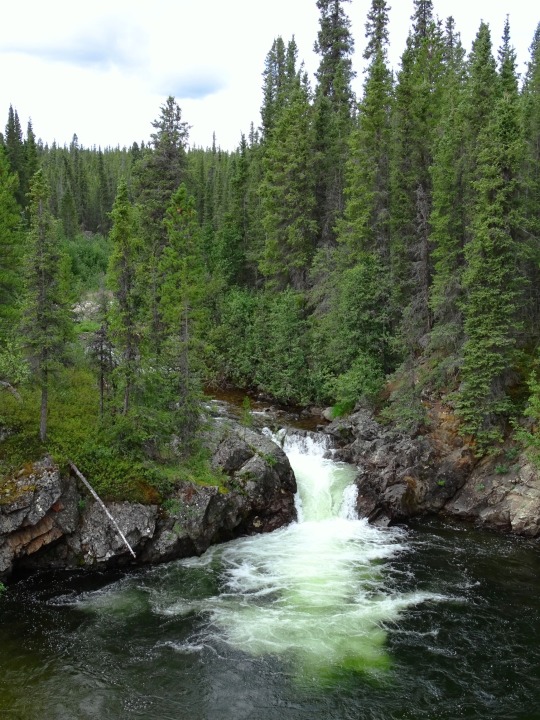
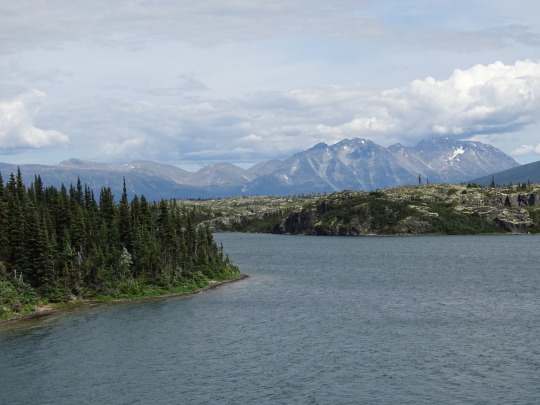

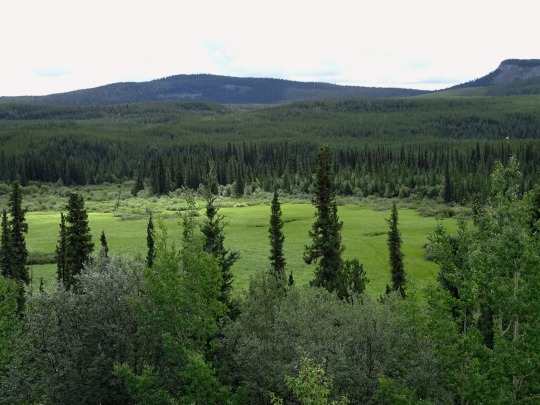

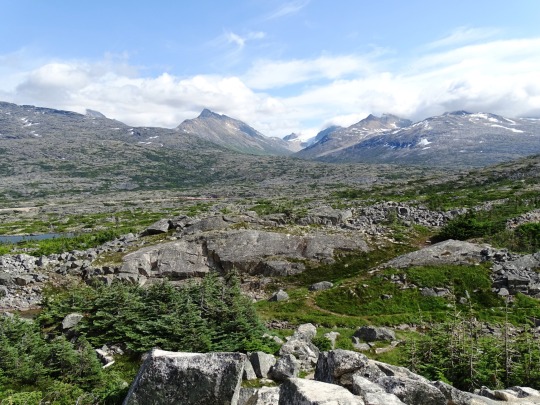
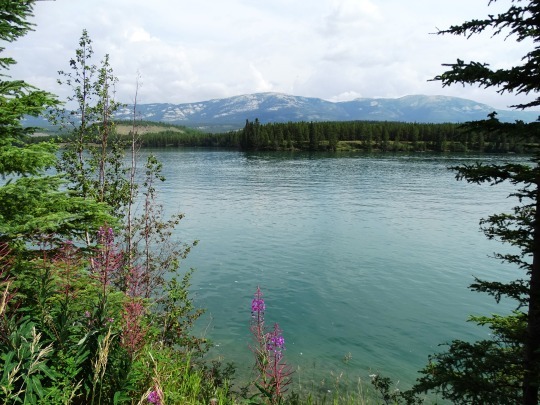
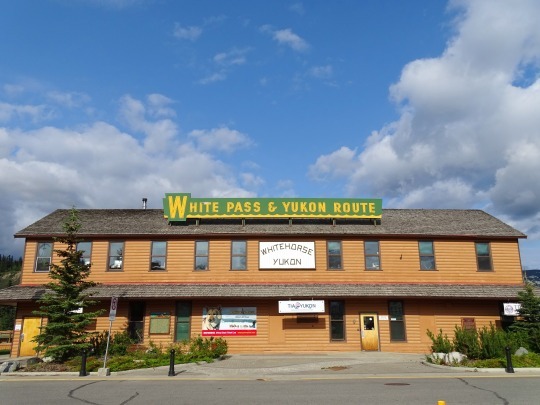
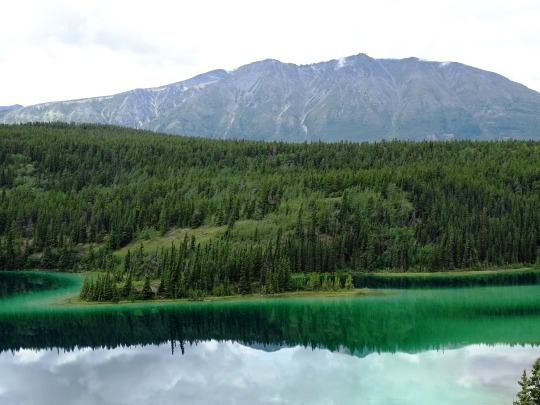
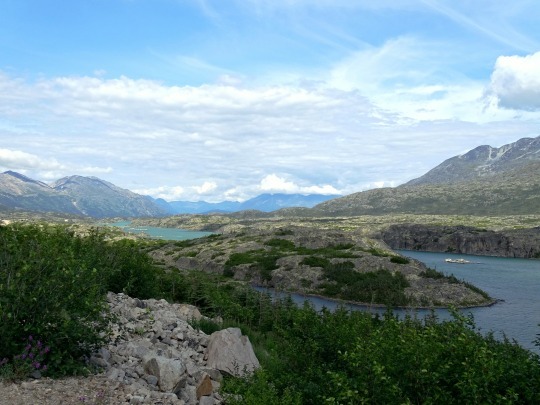
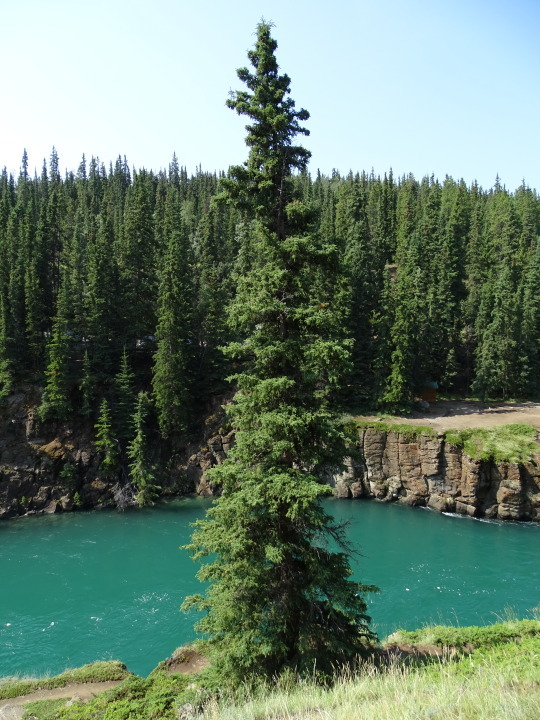
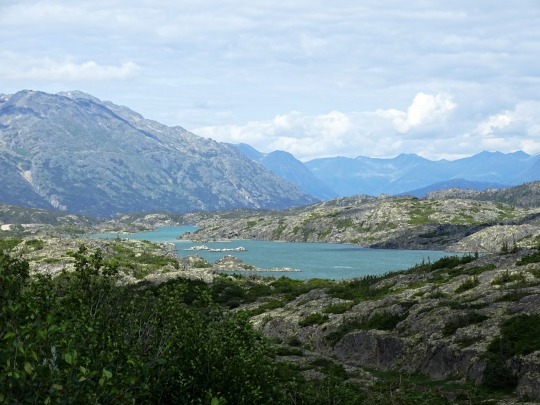
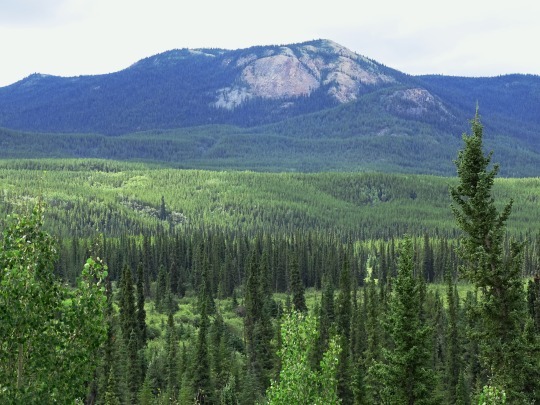
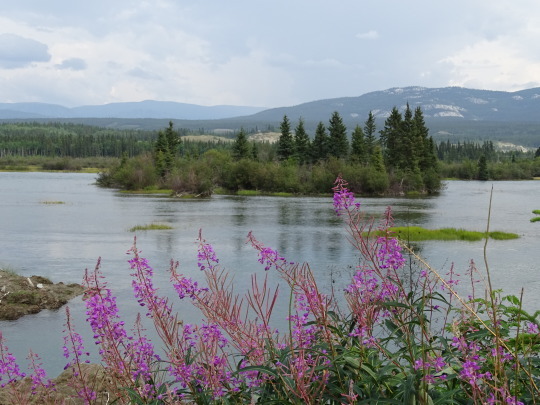
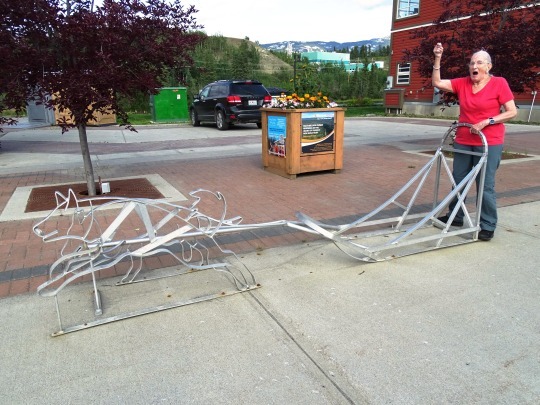
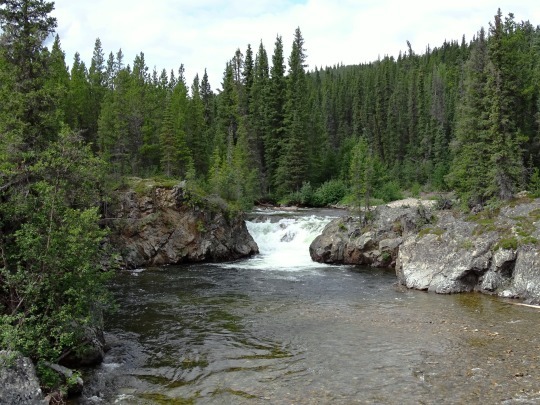



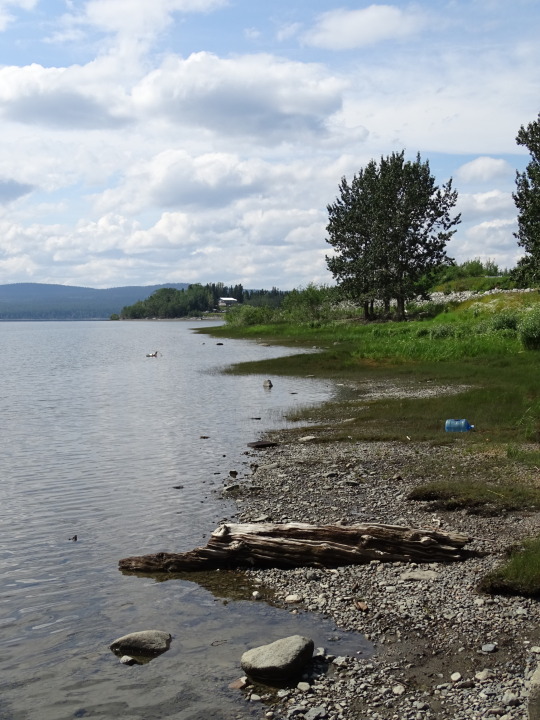
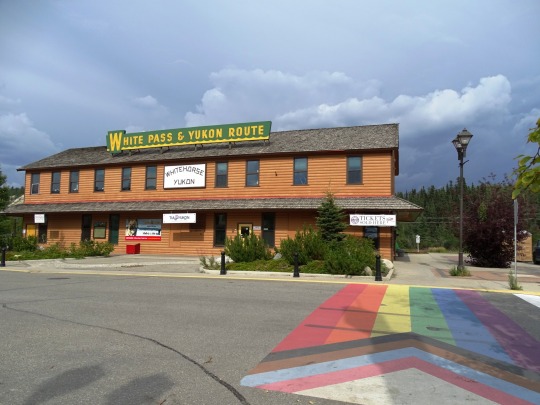
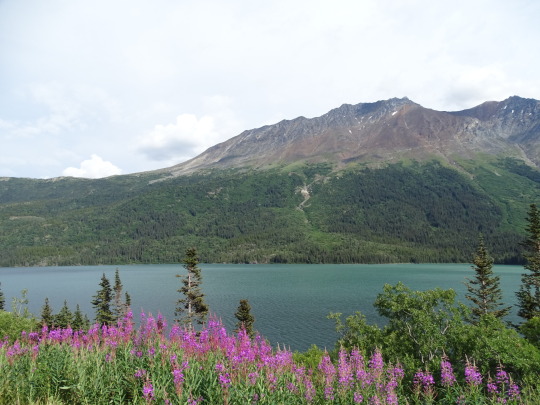


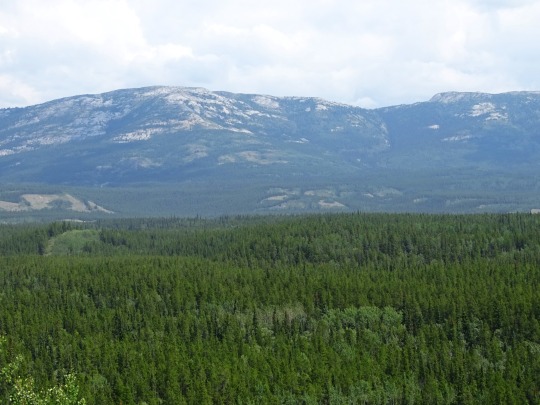
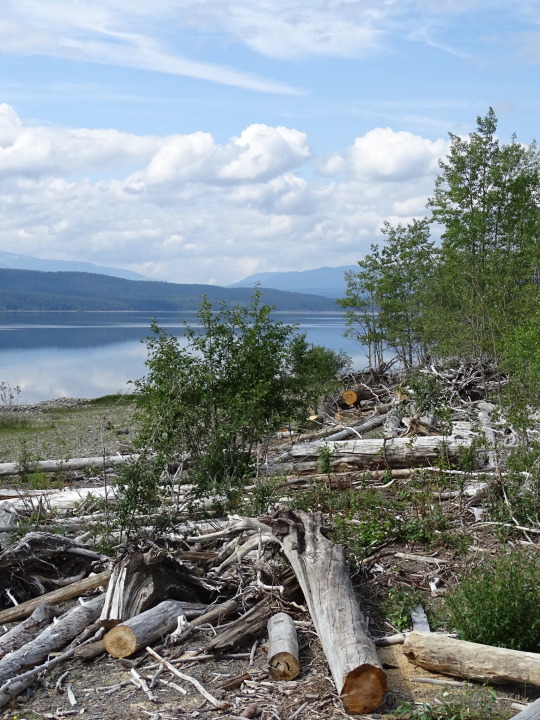
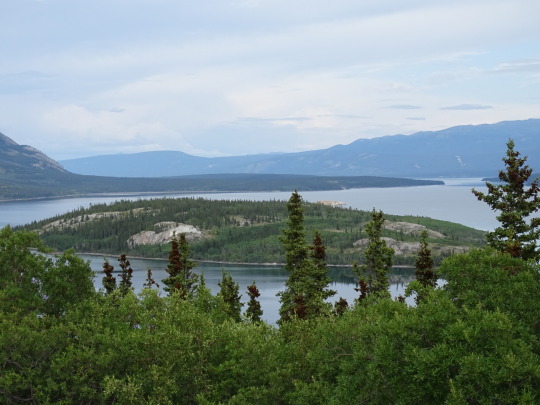
Yukon Quest Day
Yukon Quest Day is celebrated on the first Saturday of February and this year it will be marked on February 1. It is time to go on an adventure with Siberian Huskies! Dogs have been working with humans in inland Alaska for over 10,000 years. Folklore in Alaska has mythological heroes who interacted with dogs, and some claim canines to be the ancient ancestor of the first human. During the Alaskan Gold Rush, Leonhard Seppala introduced the Siberian Husky, which was smaller than native Alaskan canines. The current sled dog’s genetic base is made up of indigenous dogs and Seppala’s Huskies. The genetic mix of the normal Yukon Quest Husky has been carefully chosen through many generations of breeders.
History of Yukon Quest
Yukon River serves as the historical highway of the north. The trail would follow the routes taken by prospects to reach the Klondike during the 1898 Gold Rush, and then to the Alaskan interior for subsequent gold rushes in the early 1900s. They despised the Iditarod Sled Dog Race’s numerous checkpoints and envisioned an endurance race in which contestants would rely on themselves and survival would be as important as speed. On the 25th anniversary of the event, Shank stated, “We wanted more of a Bush experience, a race with a little woodsmanship in it.”
The Yukon Quest was conceived in a bar in April 1983 by four Alaskans: LeRoy Shank, Roger Williams, Ron Rosser, and William ‘Willy’ Lipps. To commemorate the Klondike Gold Rush era the four proposed a 1,000-mile sled dog race from Fairbanks, Alaska, to Whitehorse, Yukon. A sled dog race from Fairbanks to Whitehorse had been discussed as early as 1976. But it wasn’t until this discussion that the Yukon Quest became more than just a concept. The race was dubbed the “Yukon Quest” by them to honor the Yukon River.
The first Yukon Quest put both race logistics and all participants to the test. In 1984, 26 teams left Fairbanks. Twenty teams arrived in Whitehorse over the next 16 days. Six teams were forced to abandon the race along the way. Sonny Lindner won the Yukon Quest for the first time, finishing in just over 12 days.
Yukon Quest timeline
1986
The First Season of Yukon Quest Starts
LeRoy Shank, Roger Williams, Ron Rosser, and William ‘Willy’ Lipps take their first journey.
2011
Fastest Racer of Yukon Quest
Allen Moore, completes the race in just eight days, setting a record that is difficult to break for years to come.
2000
The First Women to Win the Quest
Aily Zirkle of SP Kennels, an American, becomes the only woman to win the Yukon Quest.
2020
The Lowest Number of Participants
Due to a lack of sponsorships, only 15 participants are present.
Yukon Quest FAQs
How do other Canadian provinces observe Yukon Heritage Day?
Yukon Heritage Day is observed on the final Friday of February. Heritage Day, on the other hand, is observed on the third Monday of February throughout the rest of Canada’s provinces and territories.
Is Yukon Quest harder than Iditarod?
The Iditarod has tougher competition, but the Quest path is far more difficult than the Iditarod, and it’s not simply because of the mountains. It is, in fact, the Yukon River. The Iditarod only travels roughly 130 miles along the Yukon, whereas the Quest travels closer to 400 miles.
What is the prize for winning the Yukon Quest?
Mushers in the Yukon Quest 1,000 Mile International Sled Dog Race will compete for a minimum guaranteed payout of $100,000. A portion of the prize money will be distributed to the top 15 finishers.
Yukon Quest Activities
Play the other games in the Yukon Sourdough Gathering: You can enjoy other winter sports like Dog Team Derby, Ski & Snowshoe Races, Ice Skating, Ice Hockey, Snowshoe Ski Ball, Bowling, and Basketball. There are many options to pick from.
Enjoy the carnival: The Yukon Sourdough carnival also includes fireworks, BBQ, ice sculptures, dancing performances, air shows, and a fiddle tournament. It is a feast for the senses so indulge in the merrymaking.
Learn about the history and legacy of Yukon: Do not only participate in numerous activities with your family but also connect with Yukon's legacy today. The festival's main goal is to bring all Yukoners together to celebrate the end of another winter.
5 Intriguing Facts About Yukon Quest Day
The coldest competitive sport ever: Every February, during the coldest and most unpredictable months of the year, this incredible winter event takes place.
Bad weather conditions don’t hamper the race: The Yukon Quest race begins on time, regardless of the weather, and lasts between 10 and 16 days until the last team crosses the finish line.
They’ve been no missed events: Since 1984, the Yukon Quest has taken place every year.
The trail follows the historic Gold Rush: This has been followed from the turn of the 20th Century.
Each team has 14 dogs: One human and 14 canine athletes traverse some of North America's last pristine wilderness.
Why We Love Yukon Quest
We love the stamina and drive of sled dogs: Sled dogs are serious athletes and the heart and soul of this sport. They are top marathon pros and are regarded as such throughout training and competition.
It emphasizes strategy: The race relies heavily on strategy and routine. The driver of the dog sled (musher) juggles between being a coach, cook, motivational speaker, cheerleader, and companion.
It’s the only international sled dog race: What began as a chat between mushers in a Fairbanks bar has evolved into something else. It is now one of the most widely followed sled dog races in the world, as well as the only one that covers two nations.
Source
#first Saturday in February#1 February 2025#travel#original photography#vacation#tourist attraction#landmark#cityscape#architecture#landscape#Yukon#Canada#summer 2023#Yukon Quest Day#YukonQuestDay#Whitehorse#Yukon River#Wye Lake#Watson Lake#Rancheria Falls#Alaska Highway#Emerald Lake#anniversary#sculpture#street scene#Nares Lake#Carcross Desert#Miles Canyon#Teslin Lake#fireweed
2 notes
·
View notes
Text
It's tough to watch Northern Exposure in 2024 (thanks Amazon Prime!) without questioning the indigenous representation to some degree, so the results of some googling under the cut.
Back in the 90's, the show was received probably not so differently than it would be today. The large number of Alaska native characters was viewed positively - Marilyn the receptionist and Ed the film buff being the most prominent, with several other recurring and side characters. However, the casting treated native groups as interchangeable, and sometimes so did the onscreen representation, like when they had Elaine Miles wear her own regalia from the 'lower 48' as Marilyn's. In this great 2020 interview with Nerds of Color, Elaine Miles also talks about some of the strange expectations from the producers, like how they wanted her to enunciate in a very unnatural way in the first season, and how she originally tried to stay out of the fray when it came to the writing but eventually felt like she had to take all the feedback and hate mail she was receiving to the producers.
Another issue was that the culture was portrayed in a very vague way early on in the series, and once it was specified that it was Tlingit and not one of the other native groups in Alaska, it didn't fit the location of the town, which is reachable by bus and car on the road system, and on a river and not the ocean. It does seem possible that the writers planned some details before realizing the town would need to be on the road system, as the Juneau area feels much more like Maurice's supposed "Alaskan riviera" than inland Alaska does.
The show uses a lot of surrealist storytelling and it's hard to know how much license is being taken when that lens is put on the native culture, with ghosts, spirits, shamans, etc., as other cultures do get some of the same treatment by the show. The raven iconography and mythology that figure so largely in the town pageant at Christmas are in fact an important part of Tlingit culture.
There were some criticisms about characterization, especially how Marilyn's stoicism fit stereotypes about native Americans. It is also pointed out that the surreal and fantastical approach did not show the more difficult sides of life for native people, or their more complicated and difficult relationships with white people.
12 notes
·
View notes